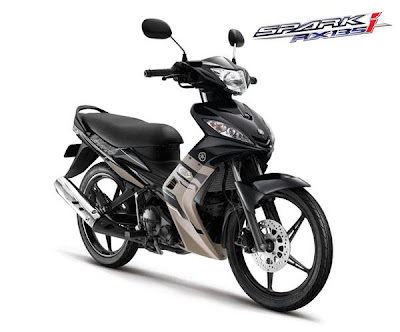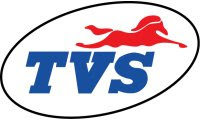There is a lot more to the Yamaha R15 than its pretty Full Fairing..
It was around 10 AM on the 10'th of January when I entered the the Auto Expo 2008. Since it was the first day of the Expo (reserved for the press and guys with Exhibitor passes) almost all the Pavilions had sparse crowds. But when I entered the Yamaha Pavilion at round 11 AM, I noticed a small gathering around a turn-table on which a bike was kept. I went closer and saw a full faired bike revolving slowly on the turn table.
My first thought was that it was a display bike from Yamaha's foreign stables. A few seconds later, I realised to my sweet surprise that the bike I was staring at wasn't a foreign bike, but Yamaha's next bike for India. It was the 150cc YZF-R15..!!
"You should probably also know these exotic tech bits have already been incorporated in bikes like the Yamaha Vixion (150 cc bikes from Indonesia) and the Yamaha T135 and the Yamaha Spark RX135i (135 cc, Liquid Cooled, Fuel Injected Step Thru from Thailand)
Liquid Cooled Engine: As an engine runs, the temperature of the engine also rises. If the temperature of the engine rises too much, then it affects the performance of the engine. Therefore engines have some sort of cooling system for its proper functioning. There are two types of cooling systems for engines. The "air-cooling system", that uses air to cool the engine and the "liquid-cooling system" in which liquid is circulated through a system of passages around the engine to cool the engine much more effectively than "air cooling".
The R15 is India's first bike to feature liquid cooling. So far all the bikes manufactured in India have had Air Cooled engines. A liquid cooled engine means that the engine will be capable of higher performance.

4 Valves per cylinder: 2 valves per cylinder have been the common format for the engines of our "desi" bikes (the now discontinued Kinetic GF series of bikes being the expection with 3 valves per cylinder format).
Correction by First_Synn: The Kinetic GF Series had 4 valves per cylinder. The 100 cc LML "Adreno"/"Energy" bikes had 3 valves per cylinder layout
The R15 will have 4 valves for its single cylinder engine. Can't exactly call it a first for India, because even Bajaj has shown the new 125 cc XCD "Sprint", which also has 4 valves. Since engines with 4 valves per cylinder usually produce most of their power at high RPM, we can expect a high revving engine in the R15.
Fuel Injection: This is also a feature that is not a first for India. The 125 cc Hero Honda Glamour "Fi", the Pulsar 220 DTS-Fi and the soon to be launched TVS Apache RTR 160 "Fi" already has fuel injection. However, Yamaha in its website says that the R15 will have a Fuel Injection with "6 hole injectors". So far, I have seen that "Fuel Injection" does not quite boost up the Power of a bike by a significant margin but it does improve the response of the engine. So expect good throttle response from the R15.
Forged Piston: The pistons made for most engines are cast pistons, it is made by melting aluminum at high temperatures and pouring it into molds. The other type of piston is this forged type, which is made by forcing aluminum that has been heated to a certain "sub-melting" temperature into a mold under pressure.

Because the aluminum alloy does not reach the melting point in this forged piston production method, it retains a stronger metallurgic quality. For this reason, forged pistons can be made with a thinner, lighter body.
But there are difficulties in maintaining precise temperature and other factors in the "forging" process. Due to which such pistons are expensive to produce. In 1997, Yamaha developed a "controlled forging technology" (CF technology) that enabled production of the forged pistons at a lower cost. These pistons are now used on Yamaha's R series supersport models.
DiASil Engine Cylinder: The Engine Cylinder is that part of the engine inside which the Piston moves. Air cooled engines have fins on the cylinder to increase the cooling process.

"DiASil" is an abbreviation for "Die-casting Aluminum-Silicon". In case of the R15 it is an all-aluminum cylinder which uses a 20% silicon aluminum alloy.

Conventional engine cylinders have a steel liner to reduce the friction resulting from the piston's movement. The "DiASil" cylinder is made by the exclusive Yamaha Aluminum Controlled Forging (CF) technology.
Because the "DiASil" Cylinder is all aluminum, it has excellent heat dissipation qualities and reduces engine weight at the same time. (Aluminum dissipates heat at 3.1 times the rate of steel.) The DiASil cylinder has 60% better cooling performance at 30% lower manufacturing cost and enables 30% lighter design.
Find more about DiASil Cylinder here..
"Link Type" Monoshock rear Suspension: The only motorcycle with a rear monoshock in India is the Honda Unicorn. But the monoshock of the Unicorn is the most basic of monoshock suspensions. The Yamaha R15 has a superior set up called the "Link Type" monoshock suspension.

Read more about Motorcycle Suspensions here..
"Delta" Frame: The R15 has a frame that is different from the normal single or twin downtube motorcycle frames seen in the present bikes in India. The "Delta Frame" of the R15 also can be found on the R series of Yamaha bikes. Apart from giving the bike the looks of a sports bike, the "Delta Frame" also has an excellent rigidity balance which should give the R15 a very sporty handling characteristic.

6 Gears: And Oh Yes.. the R15 also has 6 gears, a first for India (if you discount the legendary RD350 of course)
Front and Rear Disc Brakes: The R1 features disc brakes for both the front and rear.
According to Yamaha these features of the Yamaha R15 have been incorporated from the DNA of its high performance racing bikes like the R1. This is not exactly untrue since the R series of bikes from Yamaha actually do feature parts like these.

But what you should probably also know that exotic tech bits like these have already been incorporated in bikes like the Yamaha Vixion (150 cc bikes from Indonesia) and the Yamaha T135 and the Yamaha Spark RX135i (135 cc, Liquid Cooled, Fuel Injected Step Thru from Thailand).

So is the Yamaha R15 a harbinger of good things to come for "desi" bikers..??
I certainly think so..!! Things can only get better for the "desi" biker from here.
One have to applaud Yamaha India for trying to push the envelope of the "desi" biking scene. But with accumulating losses since 2001, Yamaha India did not have much of a choice. Its "Better late than never" for Yamaha Motors India
SOURCE : 2wheelsindia.com
























 According to the news report, TVS has been given the "Total Productive Maintenance Excellence Award" by the Japan Institute of Plant Maintenance. It essentially means that TVS has been awarded for maintaining quality practices.
According to the news report, TVS has been given the "Total Productive Maintenance Excellence Award" by the Japan Institute of Plant Maintenance. It essentially means that TVS has been awarded for maintaining quality practices.






